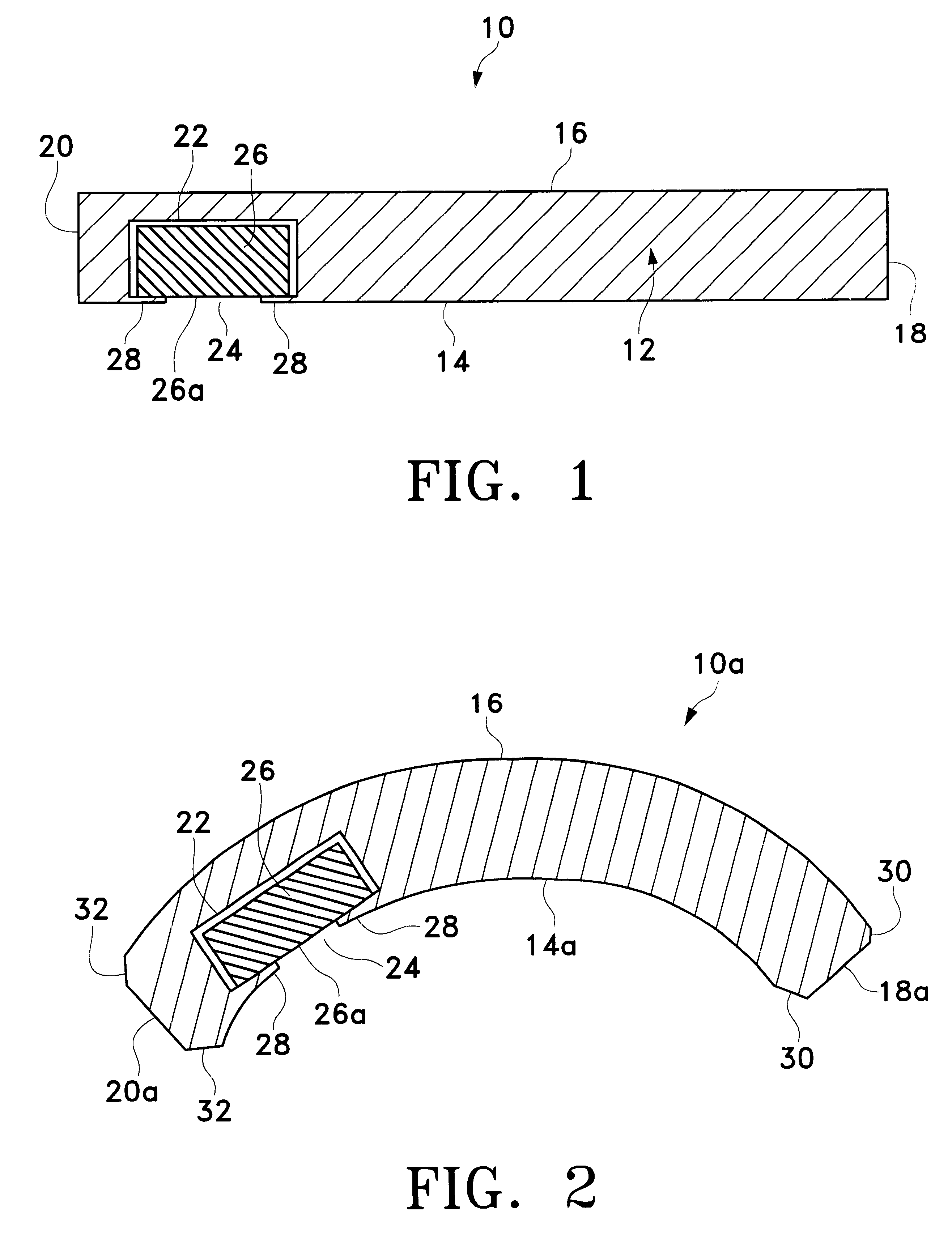Drug delivery device
a delivery device and drug technology, applied in the direction of prosthesis, eye treatment, drug composition, etc., can solve the problems of progressive damage to the retina, impracticality, and inability to read, drive,
- Summary
- Abstract
- Description
- Claims
- Application Information
AI Technical Summary
Benefits of technology
Problems solved by technology
Method used
Image
Examples
Embodiment Construction
device 50 was surgically implanted on the outer surface of the sclera, below the Tenon's capsule, generally along the inferior border of the lateral rectus muscle of the right eye of twenty (20) New Zealand White rabbits using a procedure similar to that described hereinabove for implantation of device 50 on sclera 58 of eye 52. Device 50 was constructed as shown in FIGS. 5 through 6B, with the following dimensions. Body 80 had a length 110 of about 15 mm, a width 112 of about 7.0 mm, and a maximum thickness 114 of about 1.8 mm. Retaining member 108 had a thickness 116 of about 0.15 mm. Scleral surface 82 had a radius of curvature of about 8.5 mm and an arc length of about 18 mm. Inner core 106 was a cylindrical tablet with a diameter of about 5.0 mm and a thickness of about 1.5 mm. Opening 104 had a diameter of about 3.8 mm. Well 102 had a diameter of about 4.4 mm. The pharmaceutically active agent used in tablet 106 was 4,9(11)-Pregnadien-17.alpha.,21-diol-3,20-dione, an angiostat...
PUM
| Property | Measurement | Unit |
|---|---|---|
| thickness | aaaaa | aaaaa |
| width | aaaaa | aaaaa |
| width | aaaaa | aaaaa |
Abstract
Description
Claims
Application Information
 Login to View More
Login to View More - R&D
- Intellectual Property
- Life Sciences
- Materials
- Tech Scout
- Unparalleled Data Quality
- Higher Quality Content
- 60% Fewer Hallucinations
Browse by: Latest US Patents, China's latest patents, Technical Efficacy Thesaurus, Application Domain, Technology Topic, Popular Technical Reports.
© 2025 PatSnap. All rights reserved.Legal|Privacy policy|Modern Slavery Act Transparency Statement|Sitemap|About US| Contact US: help@patsnap.com



